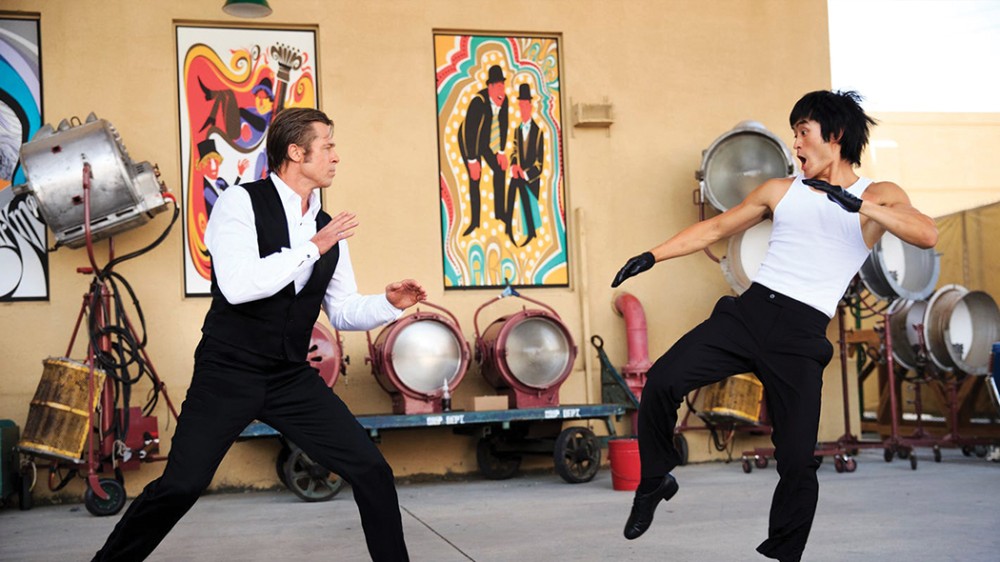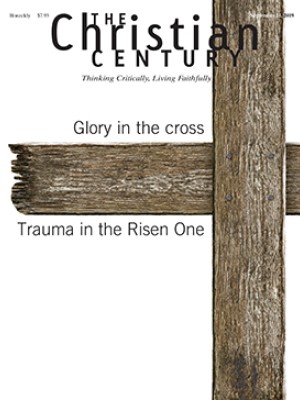Quentin Tarantino’s violent movie about violent movies
In Once Upon a Time...in Hollywood, the director delights in both cinema and blood.

Quentin Tarantino’s movies are best known for their violence, but they are also about the magical power of movies to transport us into other realities. His latest movie, Once Upon a Time in . . . Hollywood, makes this love of the fiction of cinema the subject of the story. It is a beautiful, enrapturing film. It also serves as a commentary on Tarantino’s style of movie making, asking us to decide as viewers when violence is justified and when it is gratuitous, or whether there really is a difference.
His work is steeped in reference to other film styles and his own style has influenced a generation of filmmakers. But what most audiences remember is the violence. Tarantino doesn’t just kill off his characters; he bludgeons, burns, and tortures them. This seems to be part of his point: movies are phantasmagorical places where the normal rules of civility—or physics—don’t apply. Blood splatters farther there, and bodies can be broken more savagely than in the real world. Some viewers are horrified and turn away; others find pleasure in how far Tarantino is willing to go.
Read our latest issue or browse back issues.
Once Upon a Time completes a trilogy that reimagines moments of profound historical evil. In Inglourious Basterds, a group of Jewish American soldiers assassinates Hitler. In Django Unchained, a former slave exacts bloody vengeance on a slaveholding family and rides off into the sunset. In both films, fictional violence is offered as cathartic redemption. The viewer gets to savor an alternative history in which the good guys win. The historical evil revisited in Once Upon a Time is the murderous 1960s cult known as the Manson Family. But in this case the viewer’s cathartic satisfaction is part of what he is exploring.
The film has two story lines that converge in a violent final act. The first line follows fictional actor Rick Dalton (Leonardo DiCaprio) and his stuntman Cliff Booth (Brad Pitt) as Rick’s career falters. Rick genuinely loves acting, and he is angry at his own weakness for alcohol, fame, and adoration, which has begun to unravel his career. Cliff is his best friend and companion, who sticks around to do home repairs and boost morale even when there is no stunt work to be done. He is also a lethal fighter. Rumors that he killed his wife have soured his reception in Hollywood and bound his career permanently to Rick’s.
The second thread of the movie follows the real-life story of Hollywood actress Sharon Tate (Margot Robbie) from her life as a rising star to the night in August 1969 when, eight and a half months pregnant, she was violently killed along with four other adults by members of the Manson Family. These two stories converge that night, with Rick and Cliff playing decidedly fictional roles.
Tarantino’s decision to give historical events alternative endings seems calculated to shift the viewer’s moral stance toward the violence on screen. If we feel squeamish about gratuitous violence, we perhaps feel better about it when directed at Nazis, slaveholders, and murderous cult members. Attacking historical evils allows Tarantino to coat his violent proclivities with the patina of moral righteousness.
That much seems relatively clear in Inglourious Basterds and Django Unchained. In Once Upon a Time, the cathartic element is complicated because the film is about the portrayal of violence on screen. The film hints that violence on television is at least partially responsible for the violence of the Manson cult. On their abandoned movie-set ranch, cult members sit all day in the dark watching TV reruns. One of the murderers even goes so far as to voice the motives for murder directly: “My idea is to kill the people who taught us to kill”—that is, the Hollywood film industry. The cult members are presented as a lost generation who have been abandoned to the violence shown on screen.
The strong suggestion that Cliff is a wife-murderer prone to dishing out unmerited violence further scrambles our assumption that the murderous teenagers are the bad guys and Cliff and Rick are the good ones. The story doesn’t have the moral clarity that might justify the glee we might take in the violence that ensues.
Tarantino clearly believes in the catharsis of fictional violence—as its title suggests, Once Upon a Time is a kind of fairy tale, and it is deeply compelling. But he does appear inclined to ask the audience for some self-reflection. He seems to be chastising those who pat themselves on the back for liking extreme violence only when it’s directed toward people we easily judge as deserving of it.
There is no good or bad movie violence for Tarantino; it is all just cinema. Given how deeply he loves the art form, and wants us to love it too, it is not a denigration to call something “just a movie.” We don’t necessarily learn anything about justice in these films, but we do learn a lot about our own delight in the worlds he is creating, however violent. That Tarantino refuses to fully justify our delight seem like a sign of moral growth as a filmmaker and demands that we, his audience, grow as well.
A version of this article appears in the print edition under the title “A violent movie about violent movies."






